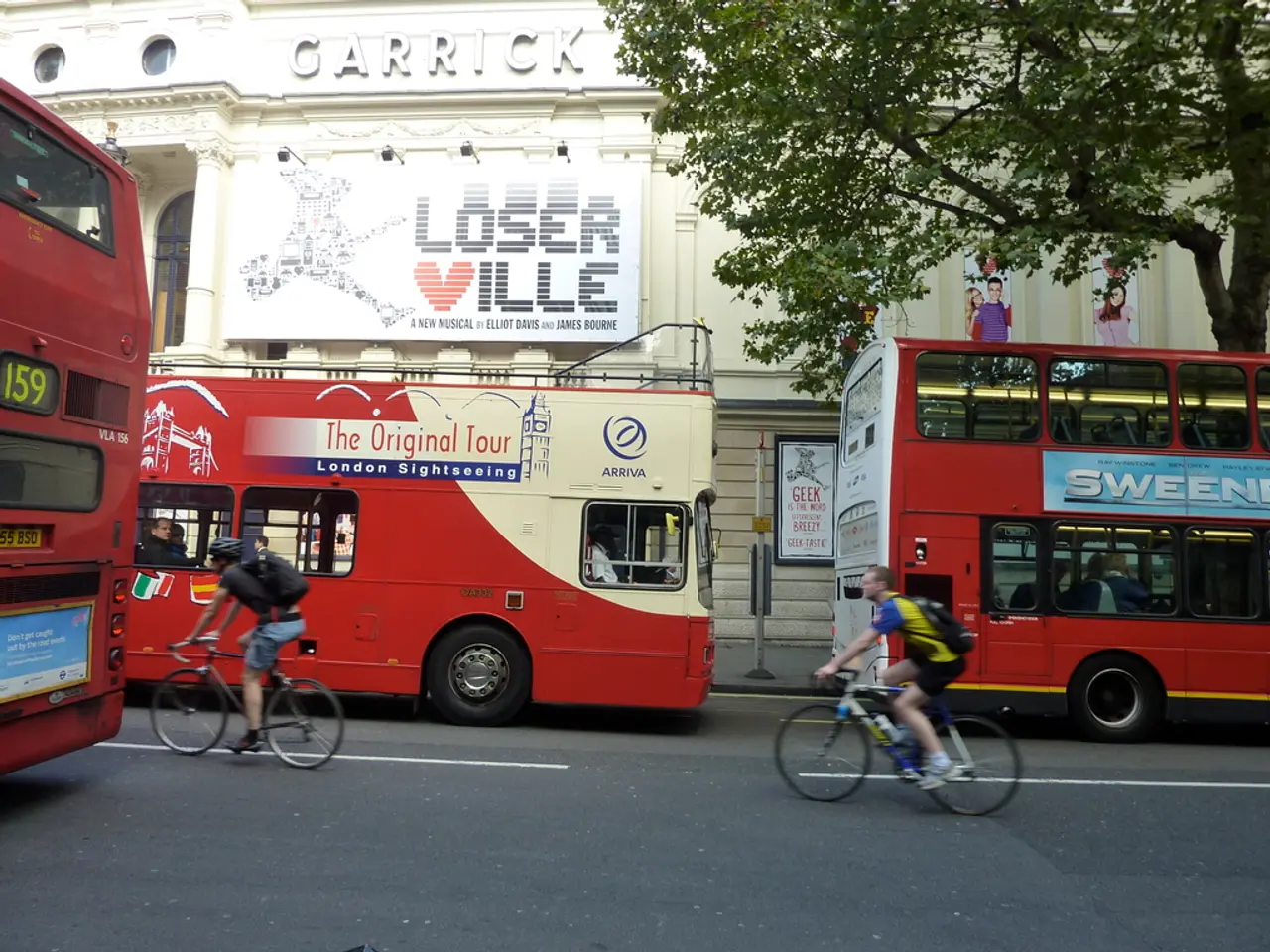Expansion of Bike-Friendly Los Angeles: Introduction of Bicycle Pathways
In the city of Los Angeles, known for its automobile culture and notorious traffic congestion, a shift towards more sustainable transportation solutions is underway. The "Twenty-eight by '28" transportation strategy, introduced in 2017, aims to bolster public transit and bike lanes across the city in preparation for the 2028 Olympics.
Los Angeles Mayor Karen Bass is committed to a "transit-first" Olympic Games, but significant shortcomings remain in project completion timelines. Critics express concerns that introducing bike lanes could exacerbate car traffic, citing increased congestion during commutes. However, Damian Kevitt, executive director of Streets Are For Everyone, comments that significant improvements to safety and connectivity of bike lanes could encourage more residents to opt for cycling over driving.
The city's reliance on cars is a significant barrier to promoting cycling, according to Kevitt. The city covers an expansive area of approximately 460 square miles, and only about 7% of Los Angeles residents utilize public transit for their commutes, while a mere 1% of Angelenos bike to work.
In an effort to address these challenges, the city has received overwhelming support from voters for expanding bike lanes and creating more pedestrian-friendly spaces. Current efforts in Los Angeles to implement bike lanes, particularly protected bike lanes, have accelerated in response to voter-backed Measure HLA, which mandates safer, more sustainable street designs aligned with the Mobility Plan 2035.
However, installation timelines still face delays. For example, protected lanes approved years ago in West Hollywood are not expected until late 2026. Despite resistance and bureaucratic delays, recent developments mark progress. The Los Angeles City Council and Mayor Karen Bass approved a Measure HLA ordinance in mid-2025, which took effect in August 2025, aiming to streamline implementation and provide administrative appeal mechanisms before civil lawsuits.
Specific projects like the Mid City Greenway now include protected bike lanes with enforcement provisions for safety violations, illustrating tangible progress on the streets. Public and advocacy groups, such as Streets For All, remain strongly supportive of these bike lanes, celebrating newly installed protected lanes on Hollywood Boulevard and elsewhere, and continuing pressure for faster rollout.
Los Angeles, with its numerous sunny days, could be an excellent environment for cycling. The city's efforts to improve bike infrastructure are occurring with the 2026 FIFA World Cup and the 2028 Olympics approaching, events that are increasing the city's urgency to improve sustainable, multimodal transportation infrastructure for safety, accessibility, and environmental goals.
However, legal, bureaucratic, and implementation hurdles show there is tension between the public mandate for safer streets and the city's slower pace. Advocates remain vigilant, employing lawsuits and public pressure to hold the city accountable for speedy and faithful Measure HLA implementation.
Opposition to bike lanes has also been reported in Glendale and parts of Hollywood. Darin Drabing, CEO of Forest Lawn Cemetery, expresses opposition to the proposed bike lanes, citing potential disruption to traffic patterns and access to his facility during peak hours. Despite these challenges, Los Angeles Mayor Karen Bass remains hopeful that the city's infrastructure can shift towards more sustainable transit solutions.
Cyclist Mimi Holt, who resumed riding after years of avoidance, expresses hope for improved safety through connected bike lanes. Holt's sentiments are shared by many Angelenos who are eager to embrace a more sustainable and accessible transportation system. The city's journey towards achieving this goal continues, with the support of voters and advocacy groups, and the urgency of upcoming international events driving the push for progress.
[1] https://www.laist.com/transportation/2023/03/24/21898834/bike-lanes-la-measure-hla-vermont-avenue-lawsuit-streetsblog [2] https://www.laist.com/transportation/2025/08/10/22275573/bike-lanes-la-measure-hla-city-council-ordinance [3] https://www.laist.com/transportation/2025/10/15/22317504/bike-lanes-la-measure-hla-streets-for-all [4] https://www.laist.com/transportation/2025/12/15/22355777/bike-lanes-la-measure-hla-west-hollywood [5] https://www.laist.com/transportation/2026/05/15/22418631/bike-lanes-la-mid-city-greenway
- Los Angeles, with its vast size and reliance on automobiles, faces challenges in promoting cycling, given that only 7% of residents use public transit and only 1% bike to work.
- The city's attempts to address this issue have received support from voters for expanding bike lanes and creating more pedestrian-friendly spaces, such as the implementation of protected bike lanes aligned with the Mobility Plan 2035, as mandated by Measure HLA.
- Progress has been made, as seen in the construction of protected bike lanes like the Mid City Greenway, but delays in installation timelines persist, with protected lanes in West Hollywood not expected till late 2026.
- With the 2026 FIFA World Cup and the 2028 Olympics approaching, the city is under increasing urgency to improve sustainable transportation infrastructure, such as bike lanes, not just for safety and accessibility reasons but also for environmental goals. However, opponents like Darin Drabing, CEO of Forest Lawn Cemetery, cite potential disruptions to traffic flow and access to facilities as reasons for resistance to bike lanes.




